© Steve Cary, July 26, 2025.
Earlier this year I had a lightbulb moment, realizing there was a place about two hours away that should have a variety of montane habitats and associated butterflies. I followed up on that urge, had good butterfly results there in May and a good experience again in June. I visited a third time on July 23, with friend Bill, and below are some of the highlights.
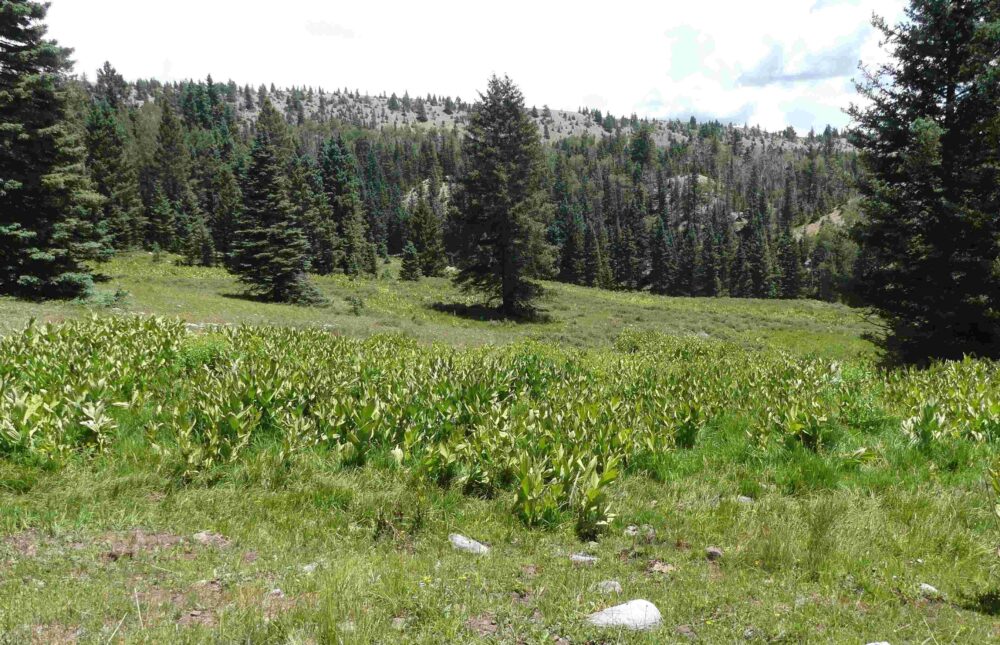
Over the course of about three mostly-sunny hours, and perhaps two miles of perambulation, my friend Bill and I encountered 33 butterfly species. Many could be considered routine for that elevation: Dobra Cloudywing, Draco Skipper, Queen Alexandra’s Sulphur, Arctic Blue, Variable Checkerspot and Common Alpine.
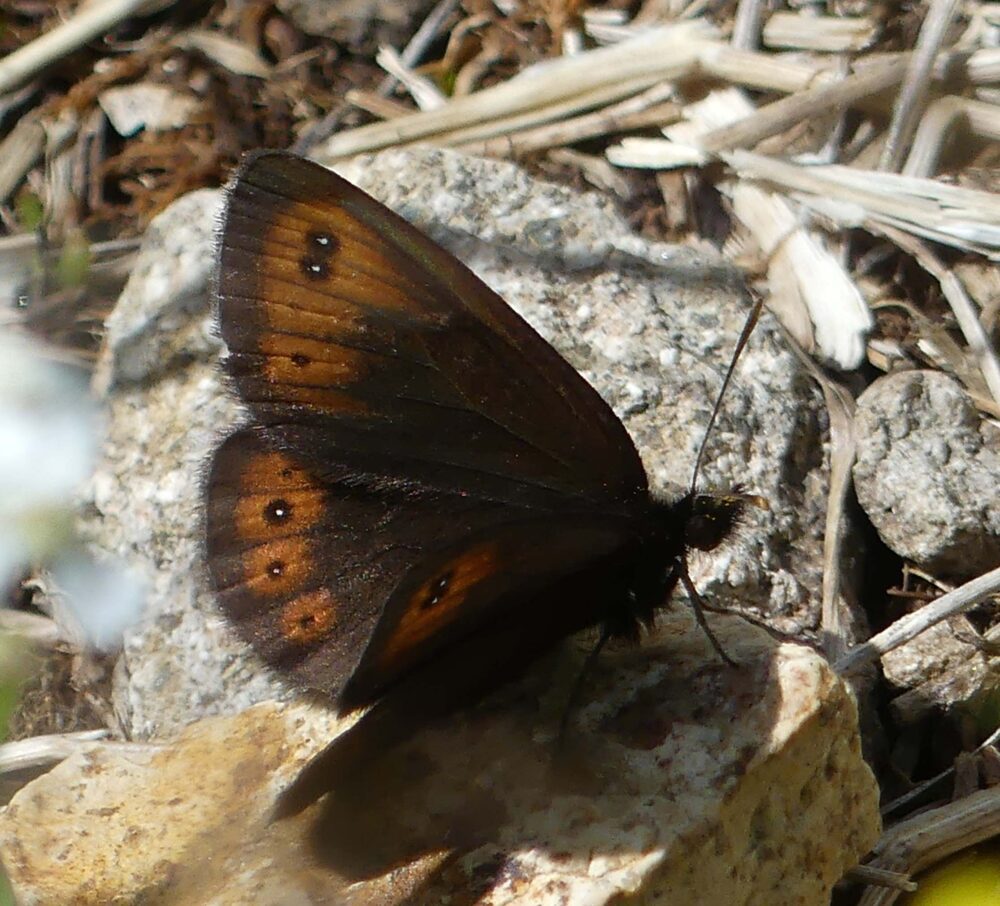
Scudder’s Sulphur (below, notice the pink edging and highlights) was a particularly nice one to see because it requires damp ground and is therefore absent from the vast mountainsides drier meadows and grasslands that typify most of northern New Mexico’s alpine terrain.
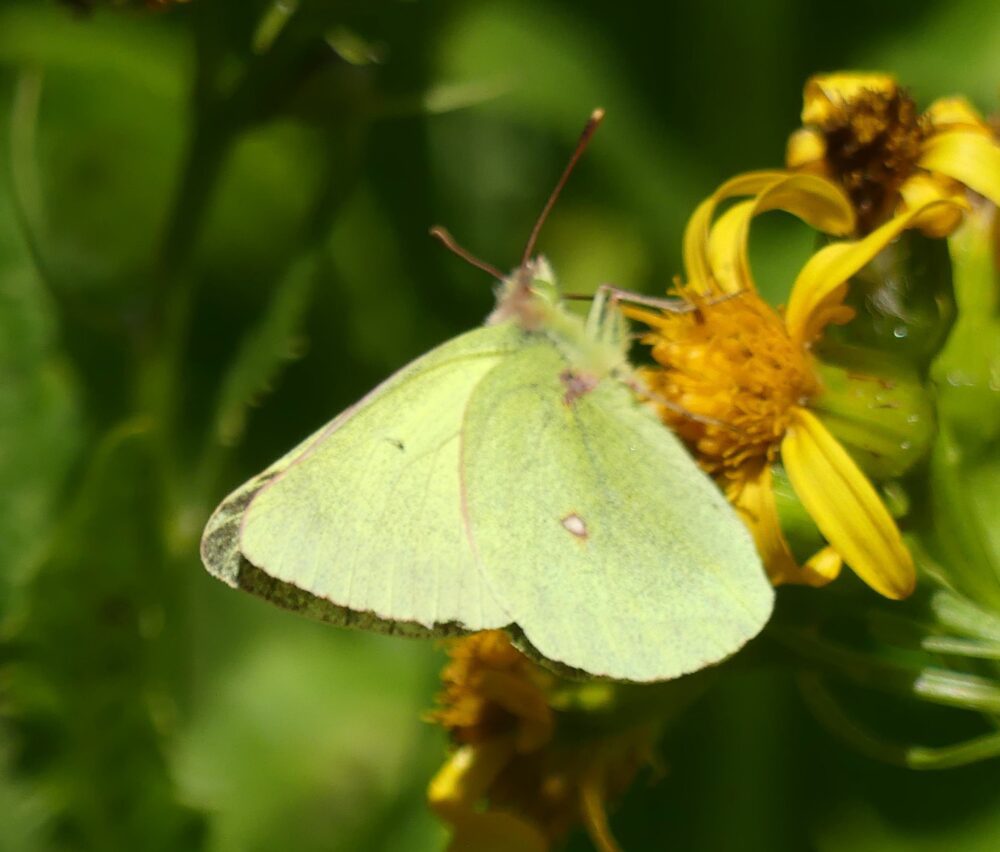
Fritillaries were particularly well-represented at Canjilon Lakes with five species: three greater and two lesser. At 10,000 feet, one expects the small, green-tinged Bischoff’s Fritillary (aka Mormon Fritillary):
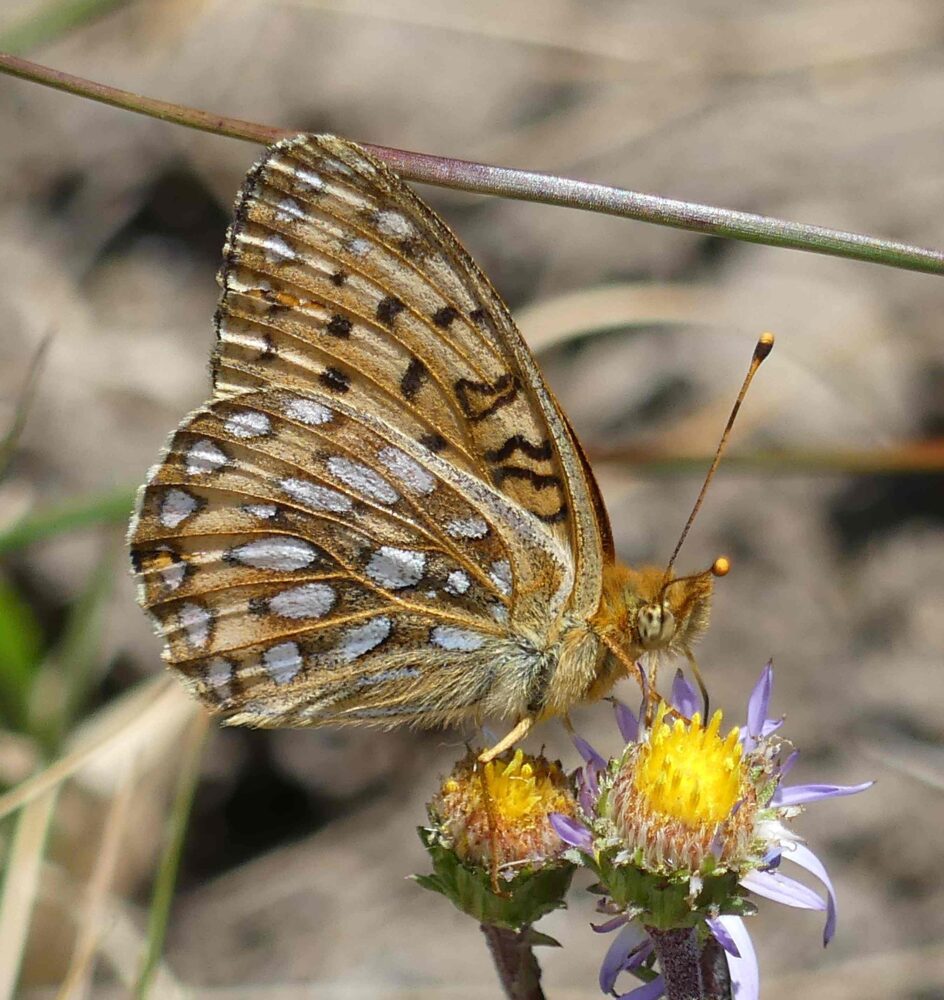
You also might expect ‘Electa’ Southwestern Fritillary, a routine summer denizen of Sangre de Cristo, Jemez and Tusas mountains, though this site is near the upper altitudinal limit of its occurrence. It also has blue-grey eyes but is noticeably larger and darker than Bischoff’s
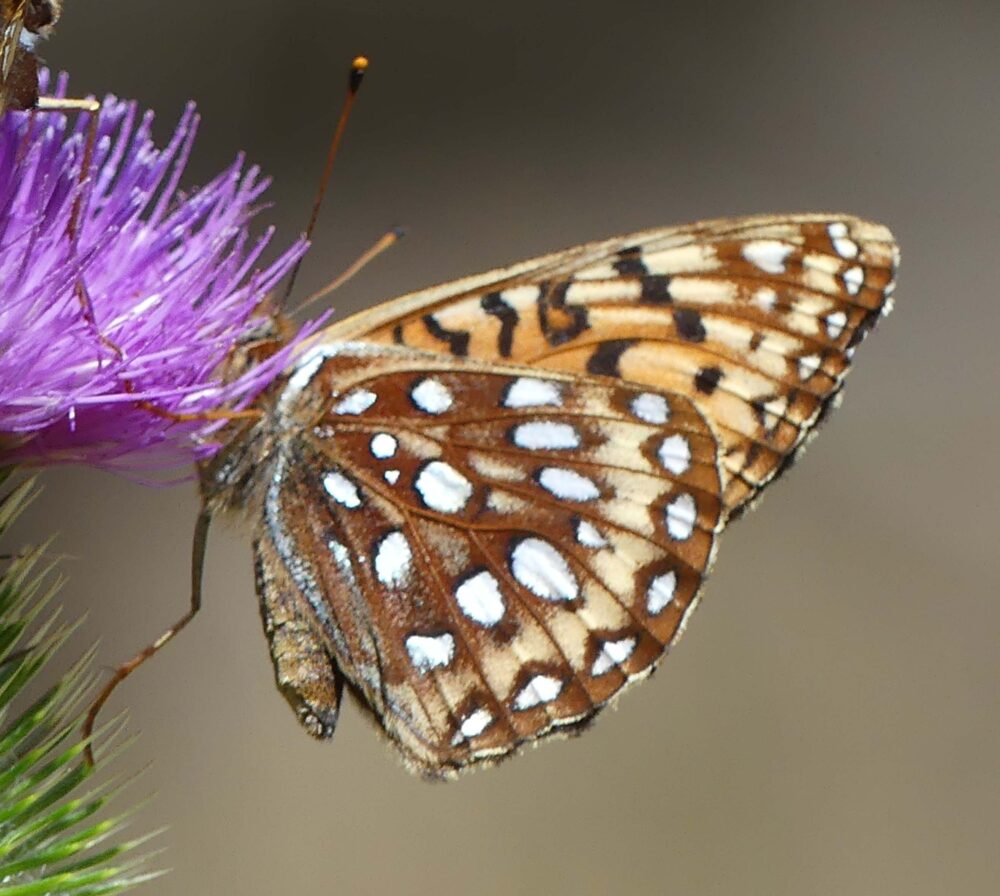
I was particularly hoping to see and document a third greater “silverspot” — Atlantis. Over the prior year, Colorado’s Mike Fisher persuaded me that Atlantis Fritillary was present at Hopewell Lake (on US 64 between Tres Piedras and Tierra Amarilla) as recently-described subspecies sorocko. I trust Mike F., but I was unable to find Atlantis in any of my photos from many past visits. Clearly, I was missing something, so Mike F. agreed to meet me at Hopewell Lake on July 22, 2025, to show me what it looked like and how I could distinguish it from Electa. We met as planned, but our day was Atlantis-free, until the last 15 minutes. Finally, I brought to him one that assuredly was Atlantis. Its very dark ventral hindwing discal area was easy to see and easy to differentiate from electa, which is reddish-brown in that area. Mike drove home the following day, but Bill and I went on to Canjilon Lakes. The image I made below is a little over-exposed and glary, but the ventral disc definitely lacks the reddish tones of Electa (above). This is Atlantis.
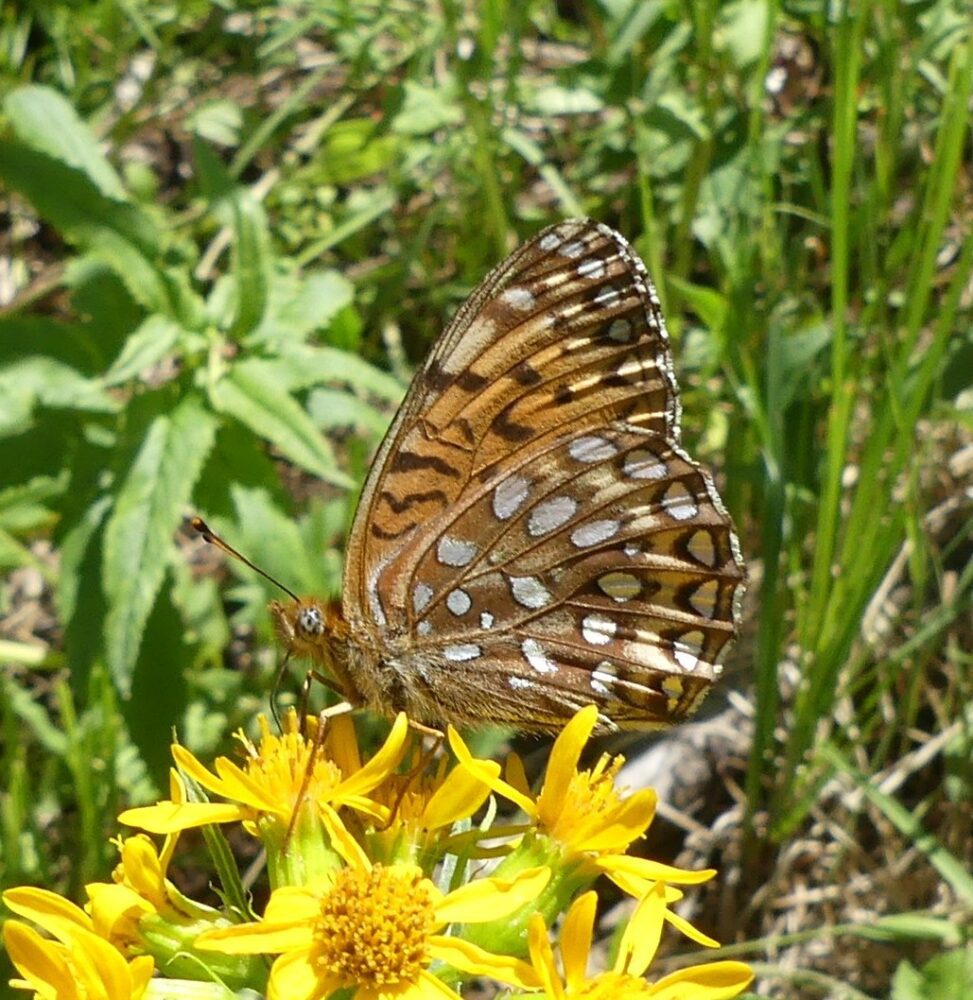
The species account for Atlantis in BONM comments (from the original description) that Atlantis is very like ‘Electa’ in many ways, but Atlantis tends to favor wetter ground. Such habitats are scarce in New Mexico, but are well-represented at Hopewell Lake and Canjilon Lakes. That wet ground proved key to the presence of another important butterfly which is not available at just any ordinary 10,000-foot meadow. We had seen the more routine Arctic Fritillary (Boloria chariclea) at Hopewell and again at Canjilon Lakes. Its marsh obligate sister species, Silver-bordered Fritillary (referred to snarkily as the bullet-hole frit) was harder to find at both localities. Eventually we succeeded, but feet got wet, a sacrifice happily made!
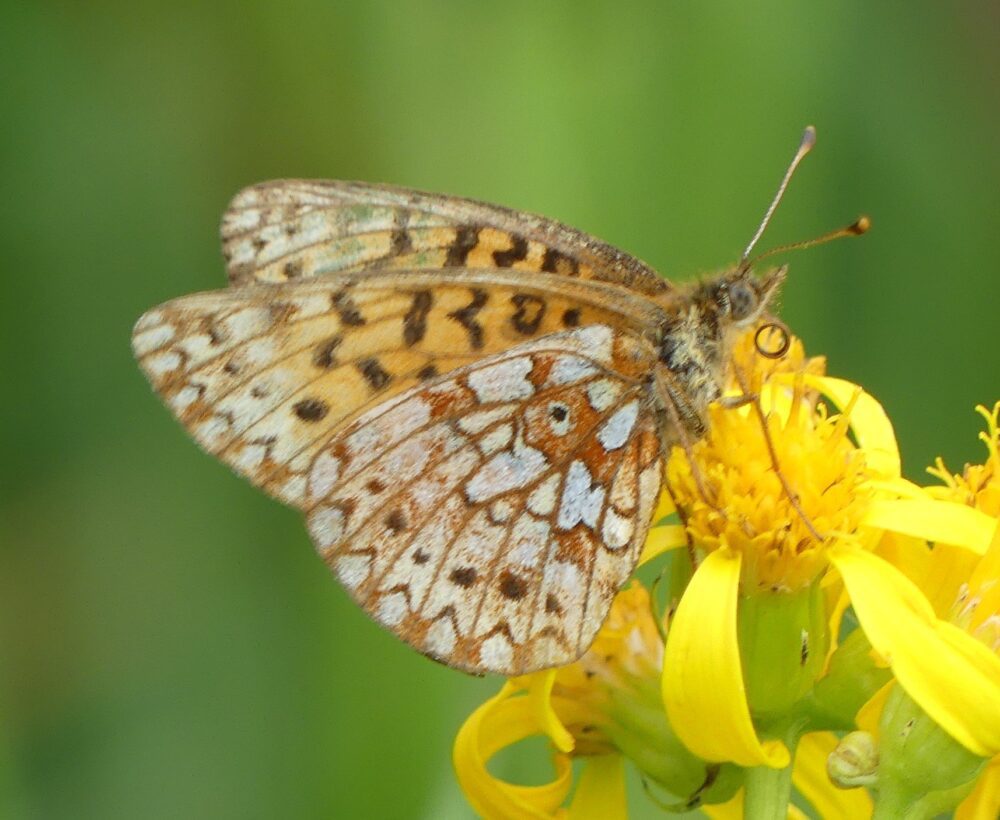
My opinion of Canjilon Lakes as a butterfly destination continues to grow and solidify. In that under-studied but easily-accessed portion of Rio Arriba County, I suspect there are more pleasant butterfly surprises awaiting those who pay it a visit.
Getting there. Canjilon Lakes is a complex of three Carson National Forest campgrounds nestled at about 10,000 feet elevation. It lies a few miles off US 84 between Abiquiu and Chama; go east on SR 115, connecting with CR 280, then FR 129 gets you there. GoogleMaps knows where it is. The access road varies from paved to all-weather gravel, then paved again for the last 5 miles. Its habitats and recreation facilities are set among wetlands, marshes, headwaters of Canjilon Creek, and dozens of small ponds and lakes, the largest of which are stocked with trout, making them very popular local fishing destinations. Summer weekends are busy. There also is Canjilon Mountain topping out at 10,900 ft. The Continental Divide Trail has a trailhead at the end of FR 129, so I drive to there, park, and begin my on-foot adventures. Once you are in that area, there are many other nearby areas to explore. Seems like a potential small gold mine.
Halloween is just around the corner. This year’s photo theme will be Butterfly Horrors, or butterflies being gobbled by other creatures. Birds, spiders, other insects? Have a horrific photo drama to share? Kelly Ricks has thrown down the gauntlet with the image below. She even IDed the victim (Burgess’ Sleepy Duskywing) and the perpetrator: probably Habronattus clypeatus.
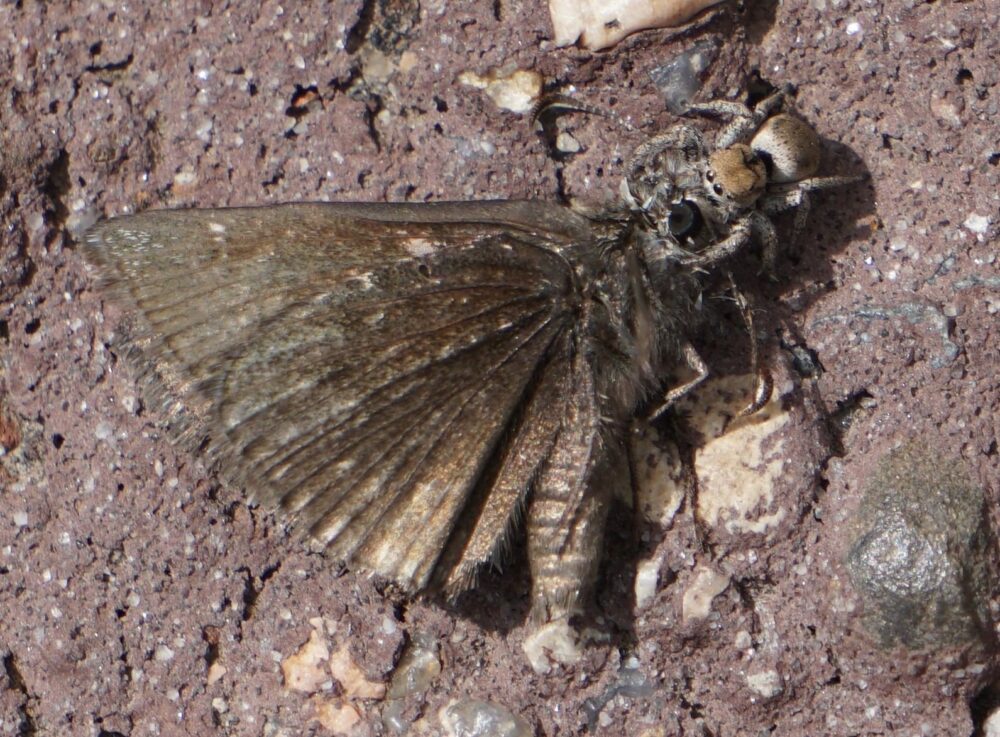
She set a high bar, but I know you can match her gruesome photo. Please send to me at sjcary1@outlook.com. I look forward to your grizzly images!

Mr. Cary,
I’m leaving these comments as I have a couple of c concise questions I would like to ask you.’
First I want to say I really enjoy your butterfly blog. You travel to places in NM giving us readers a glimpse of the country through the lens of butterfly hunting. It is a fascinating method of learning a landscape. I also read and reread your book for the same reason.
My primary butterfly watching/hunting area is south of Reserve and north of Glenwood where I stay at a 100 yo homestead cabin along the San Francisco river canyon at 5,200 ft elevation.
Question: what butterfly identification guide would you recommend for us amateur butterfly hunters in NM?
Question: you write about F.H.Snow and his trips to NM. Where can I find more information on Francis H. snow’s expeditions into New Mexico territory – he sounds like an extremely fascinating fellow – you mention he traipsed around SW NM collecting insects at a time and place the US army was even scared to venture – and Mr. Snow and his students were collecting butterflies!
Thank you very much. I hope to hear from you soon.
Sincerely, Gregory Smestad